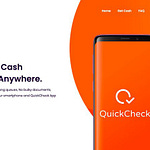Preamble rant:
The recent collapse of FTX, a large crypto exchange, and its associated entities, left many of us disappointed and disgusted with flashbacks to Enron and Lehman Brothers. Nothing is new under the sun. Unfortunately, whenever humans are involved, there is a potential for bad actors to make poor choices that wreak havoc. This has proven true across industries, countries, and time. But regulation and controls can help safeguard the little guy. I expect more regulation, legislation, and guidelines in the months and years to come.
Still, I worry that the wrong lessons are being learned. Some folks might see the FTX implosion as vindication that “crypto is bad”. Others might see it as the death knell for crypto and blockchain technology at large. This is a mistake. Technology is neither good nor bad. Humans use technology for good or bad. That’s an important distinction. One of my takeaways is to double-down and continue uncovering ways in which crypto and blockchain technologies can solve real-world problems. Let’s go!
Giant maps and summer road trips
When I was a kid, my family would go on road trips every summer. It was a great adventure. From time to time, we would pull over to the side of the road while our parents struggled and fumbled through giant fold-out maps. This was Nigeria in the 1990s. There was no internet. The maps were sometimes outdated. As you can imagine, we got lost a couple times. One day, we narrowly escaped being detained by the military because we inadvertently were driving towards Aso Rock, which was then the presidential palace of Abacha, one of Nigeria’s brutal dictators! Yikes!!
Today, I can’t remember the last time I opened up a giant fold-out map. Thank God for Google Maps! I now use it every day to find the optimal route for my commute. It’s been a massive time-saver as I’ve learned to deal with the joys of New Jersey’s clogged up highways. If you are like me, you might not have realized that some companies such as Uber pay Google to embed Maps in their products. Some other companies use Google Maps to optimize the distribution of their products. It’s really important for these companies that Google Maps is accurate and frequently updated.
As much as I love Google Maps, it’s not perfect.
Google Map’s gaps
I am going to highlight two gaps with existing mapping services: (1) Updates and (2) Ownership.
1. Updates
Google has done a great job mapping out the world. However, new roads and buildings are constructed every day, new businesses emerge with new signage. Logically, Google Maps prioritizes map updates for high population cities. Thus, Google updates Street View and Satellite pictures of big cities like London at least every year while smaller cities like my ancestral hometown, Ijebu-Ode, might be updated every couple of years. Is there a better solution?
2. Ownership
In 2013, Google acquired Waze for $1B. Waze was a fast-growing Google Maps competitor that utilized an army of volunteers to submit real-time traffic updates and review maps. Over 420,000 people volunteered to edit Waze’s maps. Additionally, Waze had ~100 employees at the time of acquisition. But get this: the average Waze employee received $1.2M after the acquisition but the volunteers received nothing. Ouch. Is there a better solution?
Introducing Hivemapper
Hivemapper is a decentralized map built by people using dashcams. It solves both of the problems - updates and ownership - outlined above by providing crypto-incentives and technology to anyone interested in participating.
Did you know that each photo in Google Maps’ Street View was taken by a Google employee in a specialized car with a 3D camera? One can imagine that the cost would be astronomical. Wouldn’t it be better if we could crowdsource images from drivers on their daily commute or road trips? Imagine if just 1% of all drivers did this. They would continually map every new highway off ramp, new small business, freshly created pothole, etc. But that’s not all. In the future, these drivers could also collect other types of data such as air quality, weather, noise, wireless coverage, and so on. These contributors would be rewarded with HONEY, the native token of Hivemapper. The best part is that it does not require any change in behavior, contributors need only install a dashcam the size of a deck of cards.
The Hivemapper Network recently launched on November 3, 2022. There are two dashcam models available priced from $549 (larger design) to $649 (smaller, more compact design shown above). If you order before January 7, 2023, you will be airdropped 500 Honey tokens. Then you will earn more tokens as you drive once the dashcam is activated.
Behind Hivemapper
Hivemapper is led by executives at the confluence of tech, logistics and crypto. The team has individuals who built and scaled global maps and geospatial products at Yahoo Maps, Scale AI, and Mapbox. They are mathematicians, physicists, computer scientists, logistic experts, artists, and designers working together to create a decentralized mapping network.
Hivemapper raised over $18M in its Series A from investors including Spark Capital, Multicoin Capital, Solana Ventures, and Founder Collective. Today, the company has a number of esteemed advisers including the current or former CEOs of Solana, Helium, Masterclass, Zillow, Tinder, and the former head of Apple Maps.
Concerns
While Hivemapper sounds interesting, it also set-off a number of alarm bells in my head. My concerns are centered around privacy, hacks and the HONEY token.
A. Privacy
Every website you visit and every click that you make on the internet is being monitored. Advertisers take that information to market new products and services to you. Now, imagine if your offline activities were being similarly tracked. Kinda scary, right? But I guess Google Maps is already tracking wherever I go.
Hivemapper says it has privacy by design. The dashcams only collect the minimum required information. Furthermore, the company blurs licenses plates and people’s faces in the pictures and videos captured.
B. Hacks
Even if Hivemapper does what it says it would do to protect privacy, imagine if a bad actor hacked the dashcams and started collecting unauthorized information. It could be ugly. Hivemapper needs to have in place strong information security protocols to safeguard its contributors and collected data.
C. HONEY token
If a contributor successfully earned 1,000 HONEY tokens while driving across the country, what can they do with it? Worst case scenario, they might sell it. But what is supporting the underlying value of HONEY? For starters, there is a cap on the total amount of HONEY. Thus, if demand increases over time, the price of the HONEY tokens should rise. I also think Hivemapper could establish partnerships with major brands then enable HONEY holders to trade them in for Uber Eats credit or airline loyalty points.
Some others have raised eyebrows about HONEY’s tokenomics. About 60% of the total HONEY supply has been pre-allocated to insiders with 20% going to employees, 15% to the company itself and 5% to the affiliated foundation. HONEY’s initial allocation of tokens to insiders is unusually high. For context, Ethereum only had 15% allocated to insiders while newer blockchains like Avalanche and Solana had 42% and 48% respectively.

But one of the golden rules of tokenomics is to avoid projects with high concentration of token ownership amongst a few owners:


Early successes
Despite some of these misgivings, Hivemapper has achieved some early wins.
During the alpha launch, the Hivemapper Network covered 95% of all roads in Manila, the capital of the Philippines in 6 months. It mapped 110,000 miles of road. Crucially, 75% of the map of Manila was refreshed every month. This is much higher than Google Maps.
Additionally, the city of Shreveport, Louisiana has also become a Hivemapper customer. The city paid $7,000 for dashcams to be put in the city’s fleet of garbage trucks. Shreveport hopes the frequently updated maps will provide greater visibility into residents’ challenges ex potholes etc.
Ideal customer
I have considered getting a Hivemapper dashcam just to test it out and engage with the network. But I don’t think I drive enough to accumulate a significant amount of HONEY tokens. I think the ideal customers might be owners of large fleets of vehicles. For instance, cross-country trucking companies, school buses, taxi companies, and mail delivery services. These large fleets cover a lot of miles on an ongoing basis and could generate a lot of HONEY tokens. Nonetheless, it might still be worthwhile for a regular Joe who moonlights as an Uber driver to try it out.
What do you think?
I hope you have a wonderful week ahead. Stay grounded and seize the day.
All the best,
Afolabi













